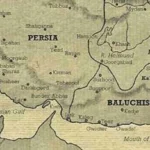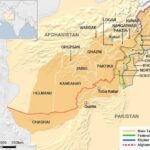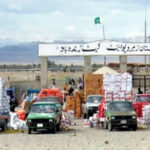Mehrgarh Civilization, a history of culture and traditions practiced dated back to 7000 BCE, located near the Bolan Pass, the Kachi Plain, is a Neolithic archaeological site that serves as the birthplace of Baloch civilization as well as historic connections with the Indus Valley Civilization. The civilization holds great importance and inherits its attributes of farming, herding, and metallurgy. Beside these attributes, it describes how the early human civilization lived.
Mehrgarh, the name we are talking about when we talk about human civilization and its growth, is an example of culture which has come in from outside. Nomadic lifestyle would be represented clearly as a permanent feature when it changes to agricultural life. By making this transition, early communities in Balochistan grew quite significantly in socio-economic terms; it played a crucial role in this process.
Some of the early agricultural or animal husbandry practices and elaborate handicrafts were found when Mehrgarh was dug out by the archaeologists. The evidence of these discoveries calls for consideration of a society deeply imbued with creative power and technical skill. And so, the objects are varied. For example, there were ceramics, jewelry, and all sorts of tools which stand out as best examples of fine craftsmanship.
One way to describe the concept of cultural inheritance as a temporary and stable, inheritance of cultural habits, norms, and traditions by which parents transmit to children. It is a reference to a particular culture, for there is a culture that maintained its dominance throughout time, and it has been so preserved. In order to demonstrate the extraordinary diversity of cultural practices the heritage contains, some of the traditions in today’s Baloch community have their origins in Mehrgarh. The tight interlace and connection of the beads may also be found in the handicrafts of the Baloch people. Moreover, it is also related to pottery. It is emphasized by the aforementioned succession that breaks the chain but does not abolish the coexistence of time in which inheritance has intertwined so carefully.
In the later sites in Balochistan we see a continuation of this domination with Mehrgarh that had been farming for long periods before the advent of such animal husbandry; The idea behind it is without question, due because to agriculture and a higher level of advanced knowledge of the cycles etc based on man’s control via domestication of plant than do seasons like monsoons, settlements made agriculture.

The Mehrgarh inhabitants achieved significant technological advancements, particularly in the areas of tool-making and metallurgy, which is an extremely important fact to take into consideration. The advancements not only resulted in an increase in the production of agricultural and handicraft goods, but they also contributed to the advancement of other technical advancements in the surrounding industry.
In addition, there is evidence to suggest that Mehrgarh was a component of a global commerce network that maintained connections with more advanced civilizations, such as the Indus Valley Civilization. To begin, this connection would be of immense significance in terms of defining the cultural and economic atmosphere that constituted Ancient Balochistan, which was a place where both sorts of people established their preeminence.
It would appear that the residents of Mehrgarh concentrated their emphasis on worshiping nature and venerating fertility as part of their religious activities; however, the specifics of these rites are not quite clear at this point in time. It is possible that these beliefs would have helped to strengthen the spiritual connection that exists between the Baloch people and the nature that surrounds them. This is because it is a cultural legacy that might have been passed down from the generations that came before them to the generations that are living today, linking specific traditions that are practiced within society.
Balochistan’s cultural history is incomplete without the Mehrgarh Civilization, which is a crucial component. This civilization is characterized by its remarkable cultural value as well as its wonderful archeological discoveries. The traditions, social structures, and technological advancements of the Baloch civilization serve as the bridge between the past and the current moment for the Baloch people. In addition to marking the beginning of the age of agrarian settlements, which eventually gave Balochistan a specific cultural and historical flavor, making it the birthplace of Baloch history and civilization.














